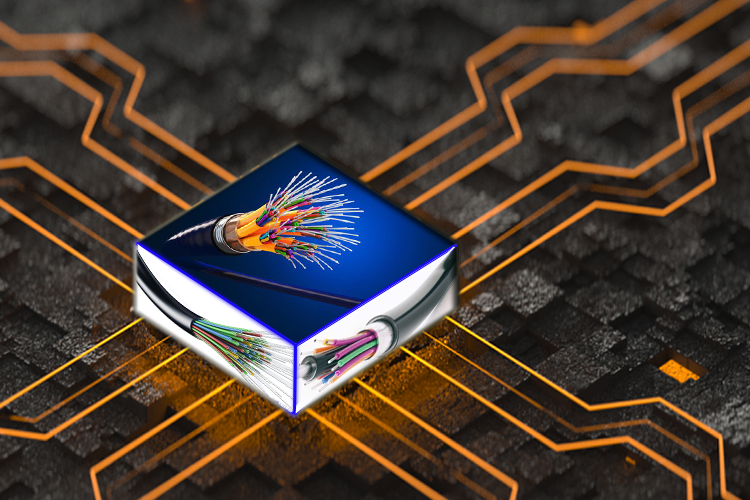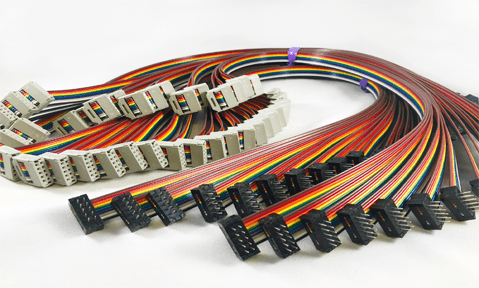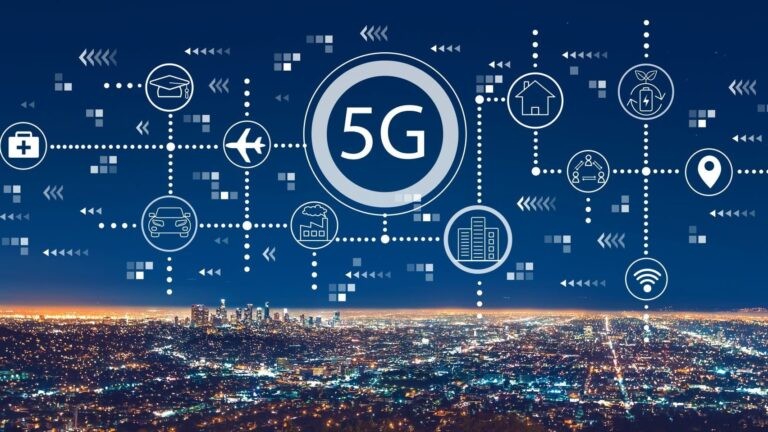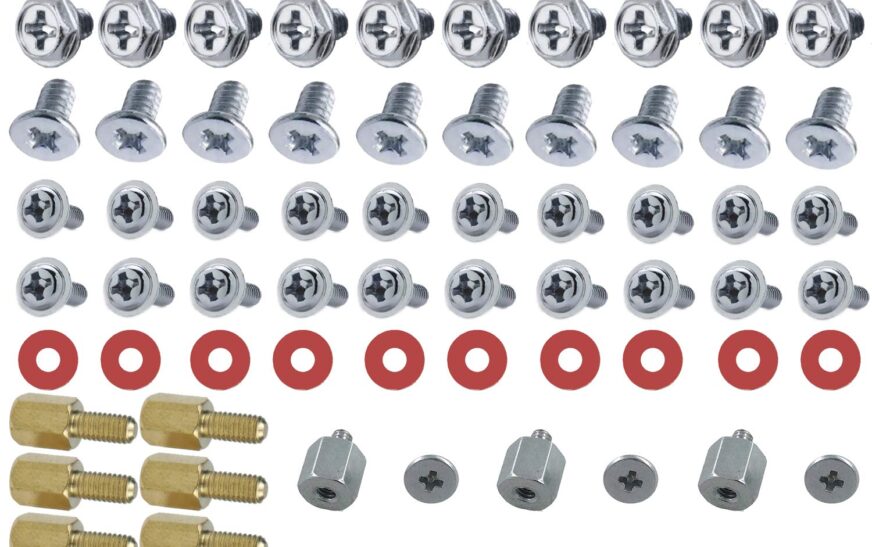Introduction
In today’s digital world, the demand for fast and reliable data transmission has never been greater. As reliance on the Internet and interconnected devices increases, the importance of an effective communications infrastructure is paramount. One of the most revolutionary technologies to emerge in this area is fiber optic cable. This article describes the complex structure, types, benefits, and uses of fiber optic cables, as well as the future they promise in the realm of telecommunications.
1. understanding fiber optic cables
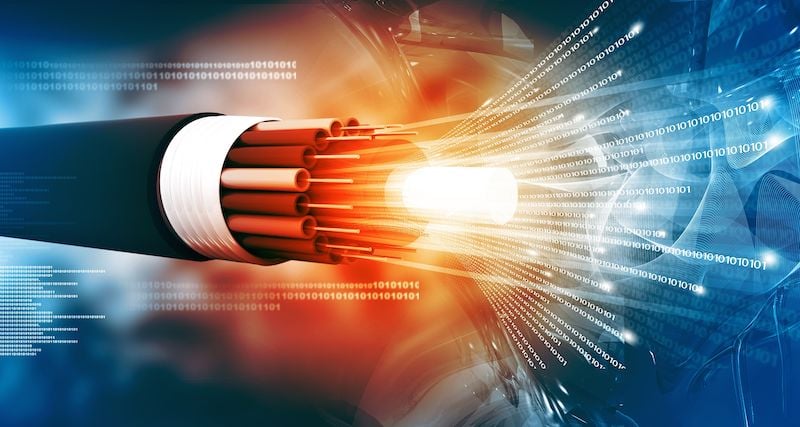
a. What is fiber optic cable?
Fiber optic cable is a technology that transmits data as pulses of light through thin fibers of glass or plastic. Unlike conventional copper cables, which transmit data as electrical signals, optical fiber uses the properties of light to enable faster and more efficient data transmission over long distances.
b. Components of an optical fiber cable
Fiber optic cables consist of several major components:
Core: The innermost part of the optical fiber through which light passes. The diameter of the core is typically 8 to 62.5 microns, depending on the type of fiber.
Cladding: A layer of glass or plastic surrounding the core that reflects light back to the core, preventing signal loss. The refractive index of the cladding is lower than that of the core, promoting total internal reflection.
Buffer Coating: A layer that protects the fiber from environmental factors and physical damage.
Outer Jacket: The outermost layer of the cable, providing additional protection from moisture, chemicals, and physical stress.
2. types of fiber optic cables
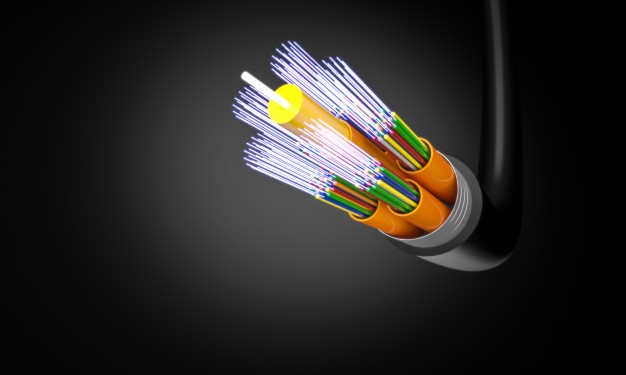
Fiber optic cables are classified into two main types based on core structure and transmission method:
a. Single-mode fiber (SMF)
Singlemode Fiber (SMF) Singlemode fiber has a small core diameter (approximately 8 to 10 microns) and propagates only one mode of light. This design minimizes signal loss and provides high bandwidth over long distances. SMF is commonly used in long-haul communications and high-speed data applications such as
Intercontinental communications
Metropolitan Area Networks (MAN)
Backbone connections for large organizations
b. Multimode Fiber (MMF)
Multimode fiber has a large core diameter (typically 50-62.5 microns) and can propagate multiple optical modes simultaneously. This design provides shorter transmission distances than single-mode fiber, but is more suitable for local area networks (LANs) and data centers. MMF applications include the following
Short-distance communications
Data centers and enterprise networks
Video and audio transmission
c. Specialty Fibers
In addition to SMF and MMF, specialty fibers are designed for specific applications such as
Polarization Maintaining Fiber: Polarization Maintaining Fiber: Used in sensors and optical communication systems that require a specific polarization state.
Dispersion-shifting fiber: designed to minimize signal distortion over long distances.
Photonic crystal fiber: Used in advanced optical applications due to its unique light guiding properties.
3. advantages of fiber optic cable

Fiber optic cables offer many advantages over conventional copper cables, making them the preferred choice for modern communications networks.
a. Higher bandwidth and speed
Fiber optic cables can transmit data at much higher speeds than copper cables, with capacities reaching several terabits per second (Tbps). This higher bandwidth allows for faster data transfer rates and can meet the increasing demand for online services, video streaming, and cloud computing.
b. Long-distance transmission
Fiber optic cables can transmit signals over much longer distances without significant loss of quality. Whereas copper cables require signal boosters for long-distance transmission, optical fiber can cover hundreds of kilometers without amplification.
c. Resistance to Electromagnetic Interference
Fiber optics is resistant to electromagnetic interference (EMI) and radio frequency interference (RFI), providing reliable data transmission in electrically noisy environments. This property is especially beneficial in industrial and medical applications.
d. Lightweight and compact
Fiber optic cables are significantly lighter and more compact than copper cables, making them easier to install and maintain. Their smaller size allows for more flexible wiring and requires less space in conduit and cable trays.
e. Enhanced security
Data transmitted over fiber optic cable is more secure than data transmitted over copper cable. Light does not travel outside of the fiber, making it more difficult for signals to be intercepted. This property makes optical fiber ideal for secure communications in government, military, and financial institutions.
4. applications of optical fiber cable

The versatility of fiber optic cables makes them widely used in a variety of industries and applications.
a. Telecommunications
Fiber optic cables are the backbone of global telecommunications networks. Fiber optic cables facilitate voice calls, video conferencing, and Internet connectivity by providing high-speed data transmission between telephone exchanges and data centers.
b. Internet Infrastructure
With the rise of the Internet, fiber optic cables have become an integral part of building the Internet backbone. Fiber optic cables connect Internet service providers (ISPs) to their customers and enable high-speed Internet access.
c. Data Centers
Data centers rely on fiber optic cables to support the storage and processing of large amounts of data. The high bandwidth and low latency of fiber optics are critical for cloud computing, big data analytics, and content delivery networks.
d. Medical Applications
In the medical field, optical fiber is used for endoscopy, enabling minimally invasive procedures. It is also used for medical imaging, laser surgery, and telemedicine, enabling remote consultation and diagnosis.
e. Military and Aerospace
Fiber optic cables are used in military and aerospace applications because of their resistance to EMI and RFI. Fiber optic cables are used for secure communications, sensor systems, and navigation.
f. Industrial Automation
In manufacturing and industrial environments, fiber optics is used for process control and automation. Fiber optics provides reliable communication between machines, sensors, and control systems to ensure efficiency and safety.
5. fiber optic cable installation and maintenance
a. Laying process
There are several important steps involved in the installation of fiber optic cables:
Planning and design: Evaluate network requirements, determine the most appropriate cable type (SMF or MMF), and plan the installation route.
Cable routing Fiber optic cables should be carefully routed avoiding sharp bends and kinks. Use appropriate cable trays or conduit to protect the cable.
Connector Termination: Terminate the end of the optical fiber with a connector (SC, LC, ST, etc.) to allow easy connection to network equipment. This task requires precision and specialized tools.
Testing Conduct thorough testing to measure signal loss, bandwidth, and overall performance using an Optical Time Domain Reflectometer (OTDR).
b. Maintenance Considerations
Maintenance of fiber optic cables is critical to ensure optimal performance. Key maintenance practices include
Routine inspections: Cables should be regularly inspected for physical damage, wear, and contamination.
Connector cleaning: Use specialized cleaning kits to clean fiber-optic connectors.
Performance monitoring: Continuously monitor network performance using test equipment to identify and address potential problems. 6.
6. the future of fiber optic technology
a. Advances in Fiber Optics
Research and development in optical fiber technology continues to evolve, bringing new advances and possibilities:
Higher-capacity fiber: Development of fibers capable of transmitting data at higher speeds and over longer distances to support growing data demands.
Integrated Photonics: Integrating optical components on a single chip to enable more efficient data transmission and processing.
Quantum communications: Explore the use of optical fiber in quantum communication systems, with the expectation of improved security and data transmission capabilities.
b. b. Role in 5G Networks
As 5G technologies are deployed, fiber optic cables will play an important role in supporting the infrastructure required for high-speed wireless communications. Optical fiber will connect cell towers and data centers, ensuring low latency and high capacity in 5G networks.
c. Internet of Things (IoT)
With the rise of IoT devices, fiber optic technology will be essential in seamlessly connecting billions of devices. The high bandwidth and low latency of optical fiber will enable real-time data transmission and communication.
7. CONCLUSIONS
Fiber optic cables are undeniably the backbone of the modern communications infrastructure. Its ability to transmit data over long distances at high speeds, coupled with its resistance to interference and enhanced security, has made it indispensable for a wide variety of applications. As technology continues to advance, fiber optics will play a key role in supporting ever-increasing data demands, paving the way for innovations in telecommunications, medical applications, industrial automation, and more.
Understanding fiber optic cables, their types, benefits, and applications will enable individuals and organizations to make informed decisions about their communications infrastructure. As we move toward a more connected future, fiber optic technology will become increasingly important and shape the communications landscape for generations to come.

